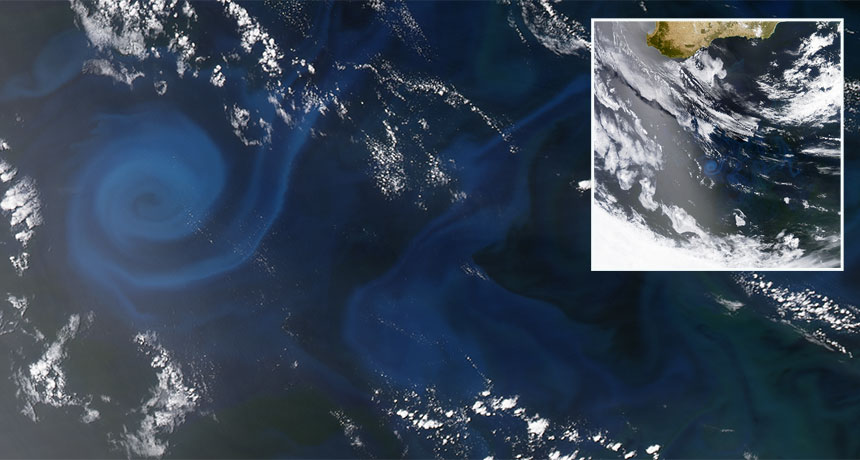Phytoplankton rapidly disappearing from the Indian Ocean
Loss of mini marine plants at base of food web threatens sea’s ecology

WATER COLOR Oxygen-producing plankton are on the decline in the western Indian Ocean, new research suggests. The work tracked changes in water color across the ocean caused by the presence — or absence — of phytoplankton, such as that seen in this swirling 2013 phytoplankton bloom.
LANCE/NASA